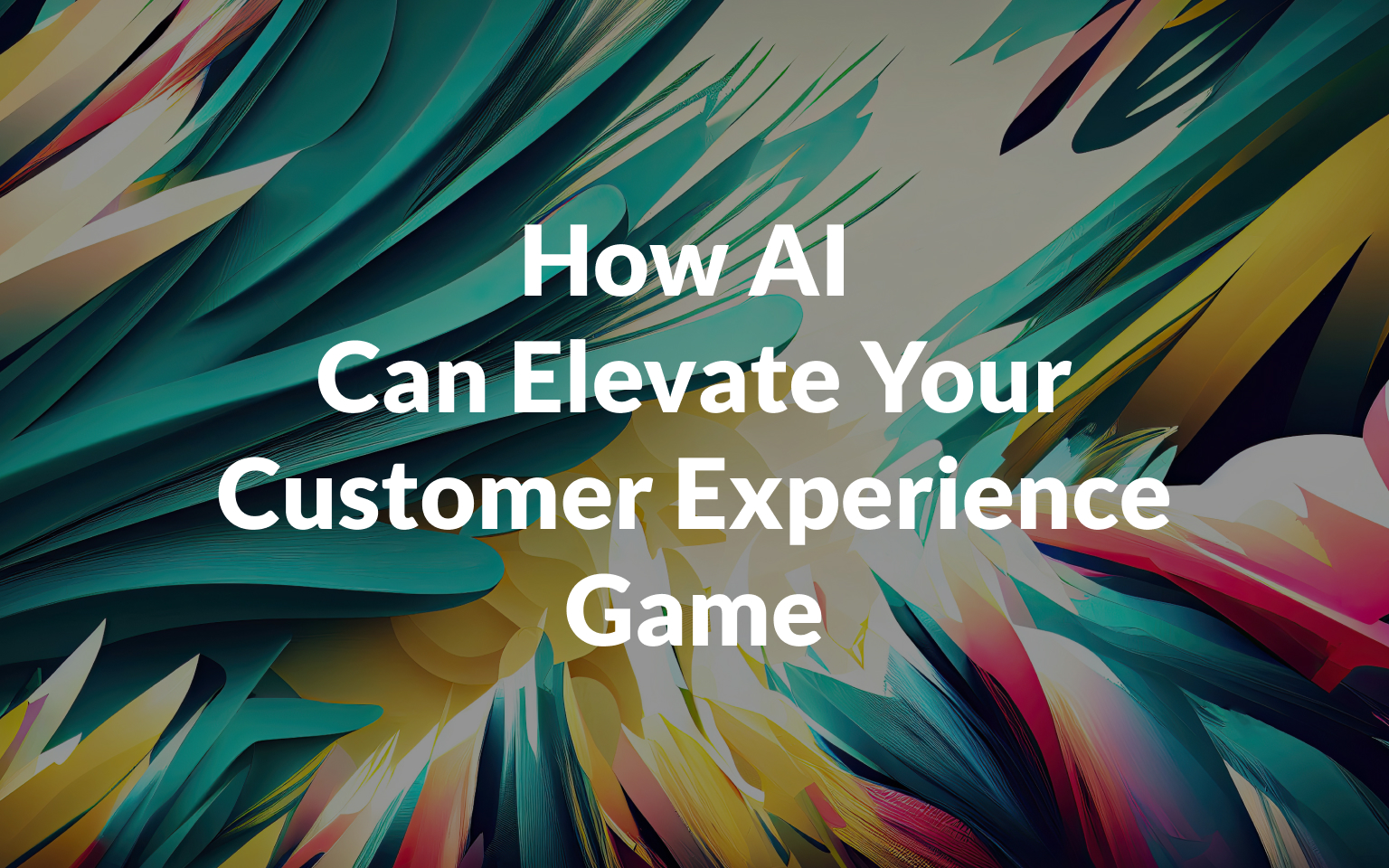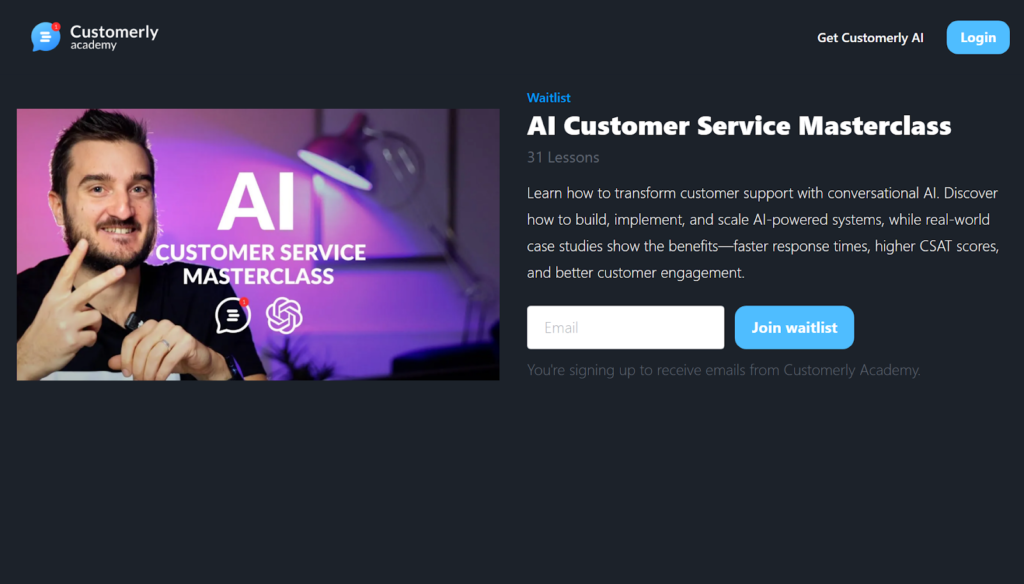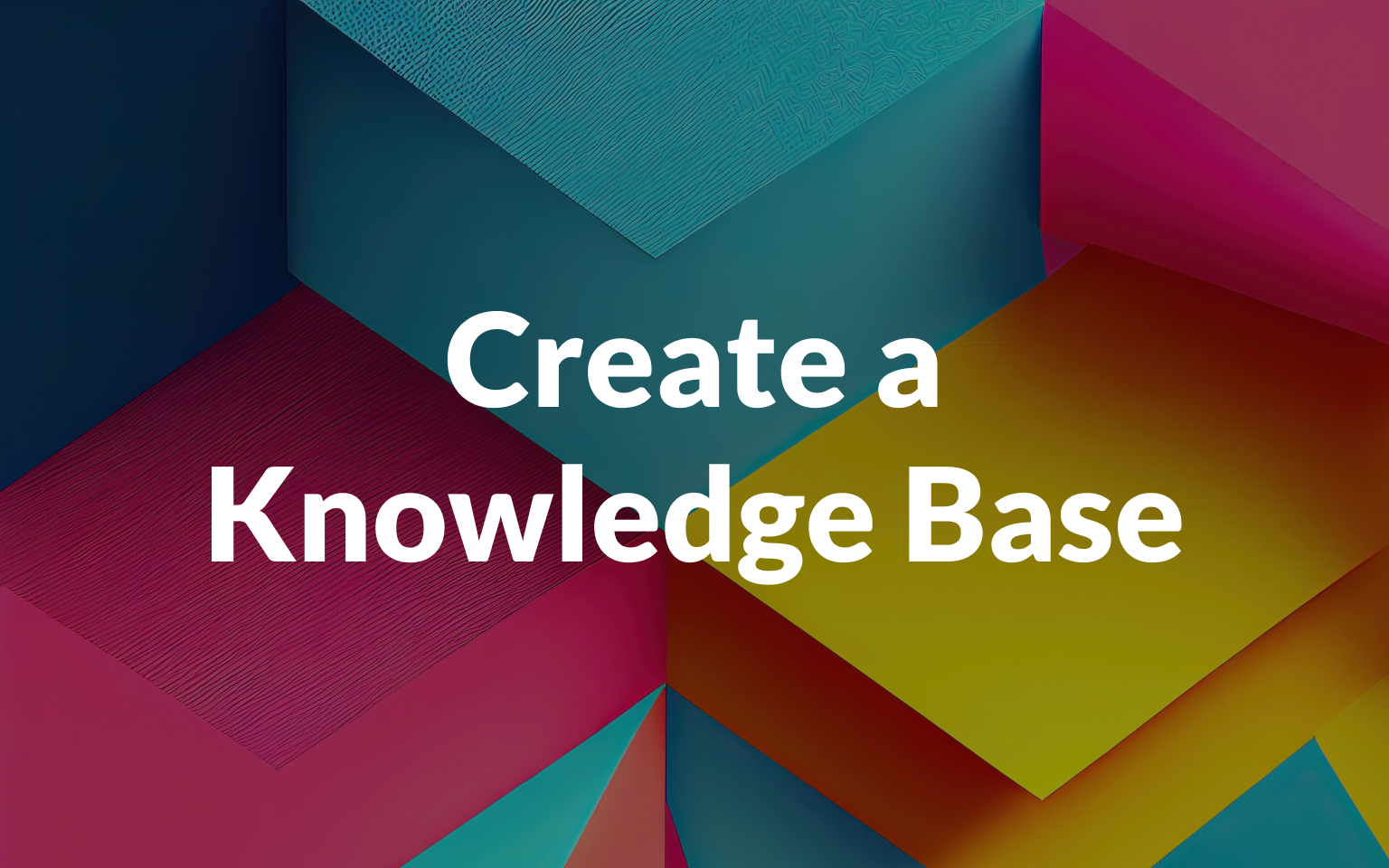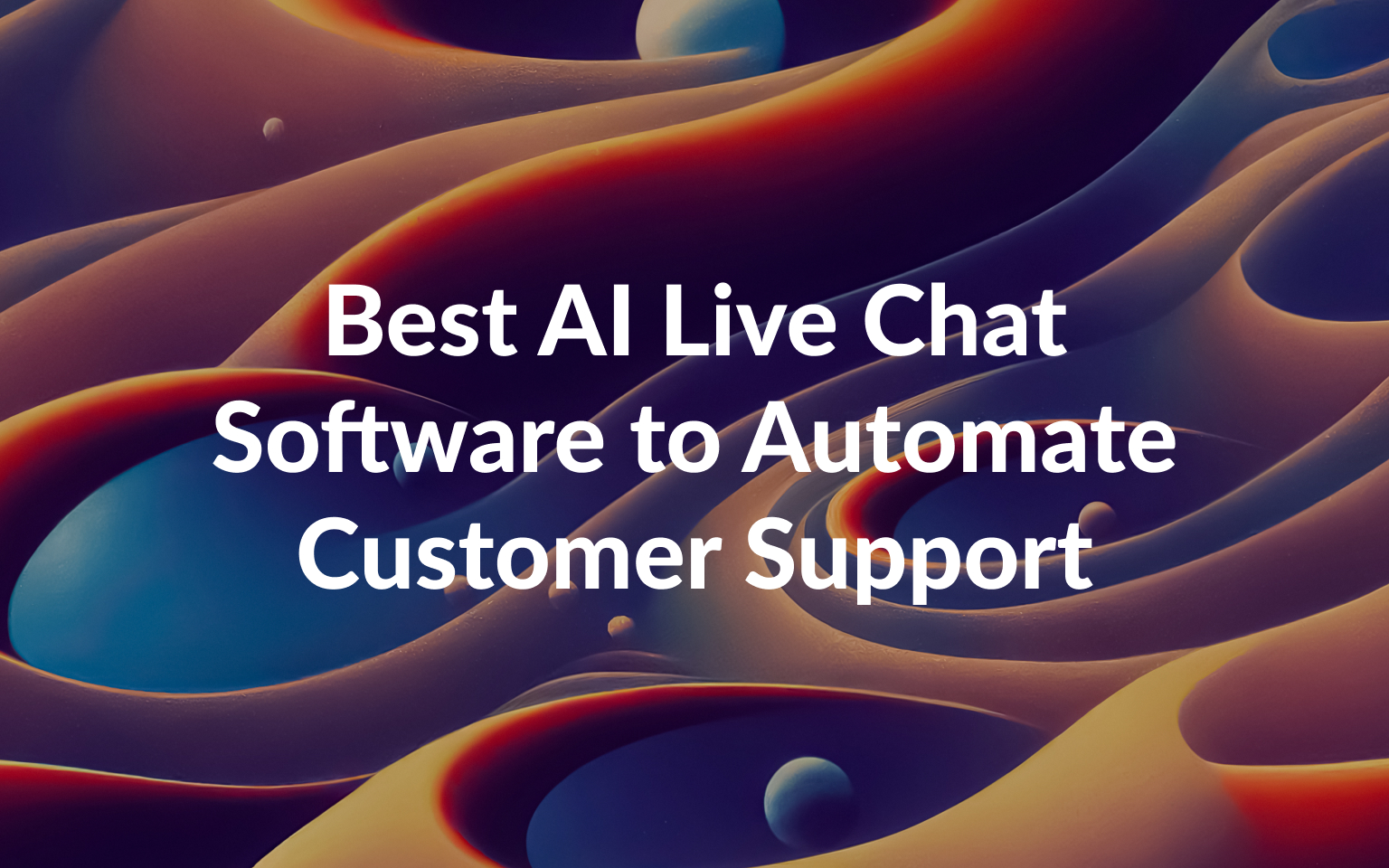

How AI Can Elevate Your Customer Experience Game

What if you could predict what your customers want before they even ask? What if you could communicate with them in whatever language they prefer, at any time, and via any channel without delay? If you haven’t added AI to your customer experience arsenal, these might seem like dreamy ideals that will forever stay “what ifs.”
However, this is no longer a futuristic fantasy. It’s already here, and brands like yours are already using it to boost engagement, improve support metrics, and empower their customers and employees.
This article offers a 101 guide to help you get to grips with what AI in customer experience actually means, and what it looks like in practice. Strap in, where about to launch your customer experience to the moon, and beyond.
What Is AI Customer Experience and Why It Matters
As a discipline, Customer Experience (CX) basically encompasses every interaction that every user has with your brand, shaping their perceptions of and relationship with it.
Consequently, “AI customer experience” is how you leverage AI customer service tools and technologies to improve those experiences or create totally new ones!!! These tools typically rely on artificial intelligence (AI) and machine learning (ML) to go beyond the capabilities of typical software-based “bots.”
In today’s business landscape, customer experiences seem to be always rising, while deadlines are becoming shorter and budgets tighter. Having software take on more of the load seems the only way out of this noose, but that risks delivering sub-par experiences.
AI systems allow businesses to take near-human-like intelligence at scale at will. You can have your cake and eat it too, in other words. While the benefits of AI in customer service will become clearer throughout this article, here are some of the highlights to tantalize you:
✅ 24/7, globally available, always-on support reduces wait times and improves satisfaction.
✅ Hyper-personalized and tailored interactions to foster stronger customer loyalty.
✅ The ability to effortlessly scale customer experiences over different timescales.
✅ Uncover actionable insights from vast and disparate datasets to optimize service strategies.
Examples of AI Solutions Revolutionizing Customer Engagement
Chances are that, if there’s an aspect of your customer experience that you want to transform with AI, there’s already a tool for it. Below are just some of the examples of the ways AI customer service tools are being implemented already:
- AI chatbots: Integrating tech like conversational AI helps extend the existing benefits of chatbots. Not only do they provide quick and easy-to-digest answers 24/7, but they allow them to contribute with more nuance and meaning.
- Voice assistants: Voice customer service, powered by AI, is on the rise. It provides an even more natural way to communicate, especially for queries that are hard to express in a written way or are too preoccupied to type.
- Recommendation engines: These are AI algorithms trained specifically to analyze user behavior and determine what products, content, or services they’re most likely to enjoy. Streaming platforms already use this to help users overcome decision paralysis and have more streamlined experiences.
- Predictive analytics: By studying historical data and patterns, these AI tools can anticipate customer needs and behaviors. Companies can use this to, for example, plan inventory supply or time sales.
- Customer Experience Management (CXM) Tools: Advanced AI CXM tools combine AI-driven insights, generative AI, automation, and more to improve retention and drive growth. It also provides a way to orchestrate a variety of the AI tools above in a unified space.
7 Practical Ways to Boost Your Customer Experience with AI
Ok, so now that you’re aware of the different ways that AI can be deployed in customer experience, let’s look at what that looks like in action. The following examples of AI customer service show how you can use it to achieve tangible outcomes for your business, with some real-life examples to back up our claims.
1. Automate Support Tickets to Reduce Employee Load
While you’re likely aware of AI’s prowess at automating routine tasks, its growing sophistication means it’s becoming increasingly adept at handling more complex user interactions. Many AI-powered systems today are capable of taking care of a large share of incoming tickets from A to Z.
They can identify query topics, gather more data, recommend relevant solutions, or intelligently escalate tickets as needed. What’s more, they can balance following pre-determined workflows with their own real-time problem-solving to provide consistent, yet flexible, support.
For example, TeamSystem Fatture in Cloud utilized AI to automate 60% of their support requests. Their AI and workflow-driven approach reduced response times to just 15 seconds while increasing customer satisfaction by 20%.

In addition to improving speed and efficiency, they significantly cut costs—reducing per-ticket expenses from €4 (internal team) and €2.24 (outsourced) to just €0.40, achieving up to 83% savings.
The bottom line was that their support team could now dedicate more time to high-value, strategic activities instead of mundane tasks.
Read the full case study on how TeamSystem achieved success with Customerly.
Automate Support Like a Pro
Reduce workload and response times with AI-driven automation. Free up your team for what truly matters.2. Personalize Customer Journeys and Boost Engagement
Before AI, delivering personalized experience was a time–consuming and resource-intensive task reserved for only the most important accounts. However, the power of AI allows companies to do it fast and at scale, helping foster authentic connections with customers en masse.
Combined with capabilities like conversational AI, AI-driven experiences are becoming increasingly difficult to discern from interactions with real-life agents. However, it allows companies to offer customers precisely what they need, when they need it, without coming across as impersonal.
AI personalization helped Not Just Analytics optimize conversation rates through highly targeted sales funnels, primarily via live chat interactions. Without having to conduct lengthy investigations, the tools automatically identified undecided customers, and offered personalized guidance toward buying decisions.

Explore the full case study on Not Just Analytics’s success story with Customerly.
3. Leverage AI Translations and Multilingual Support to Expand Globally
AI in CX can also help make a large and confusing world feel much smaller and more manageable. Why establish contact centers around the world or reroute customers, when AI can provide a unifying layer to interact with diverse audiences?
Many of the popularly-used LLMs that underlie AI systems today already support various languages, such as OpenAI’s GPT, Google’s Bard, or Meta’s LLaMA. So, it doesn’t require investing extra effort in developing or training new AI systems.
It’s well-documented how strongly shopping in a preferred language increases trust and conversation rates.

Global household names like Airbnb and Netflix achieved their astronomical growth by adopting high-quality content localization early on. This will only become easier as LLMs become better and faster. This is especially important in e-commerce, where localization plays a major role in the majority of buyers’ decisions, according to a report commissioned by Shopify.
4. Increase Conversion Rates Using Smart AI Triggers
Having agents monitor your customers 24/7, ready to jump in at critical moments in the user journey, is patently unrealistic. However, it’s a cinch for AI, which is always on and always watching.
AI customer experience systems can keep an eye out for indications that a customer needs help; whether it’s because they’re undecided, feeling lost, or losing interest. These triggers can be based on behavioral data, like excessive time spent on a page or an abandoned cart.
In one case, Feed Donkey saw a 30% increase in visit-to-conversation rates by implementing smart triggers on Shopify pricing pages. These triggers intervene at just the right time, answering questions or offering incentives to close the deal, based on the customer’s profile and past behaviors.

Learn more about Feed Donkey’s results with Customerly.
5. Streamline Onboarding With AI Assistance
You only get to make a first impression once, and onboarding is a make-or-break moment in how your relationship with a customer develops. AI tools can act as a 24/7 on-call support system during this critical phase. It can answer common questions, offer proactive support, and guide users through suggested onboarding flows.
Adobe pulled this off spectacularly by implementing AI onboarding into their Creative Cloud applications. This Adobe virtual assistant helps creatives glide through the confusing initial stages of learning new software.
However, its value goes beyond the onboarding phase, also acting as an embedded support system users can lean on to find specific functions, learn how to use new features, and troubleshoot issues. On top of providing a more frictionless experience, it helps curtail submitting new support tickets.
6. Use AI Insights to Improve Products and Service Quality
AI-powered customer experience analytics can scan vast amounts of structured and unstructured data in the blink of an eye, discovering trends and insightful gems that would otherwise go overlooked. Users can fine-tune AI analysis and reporting to identify patterns at nearly any scale, helping to inform decisions with short, medium, and long-term implications.
For example, Starbucks uses AI (with data largely gathered from its loyalty app) to analyze customer purchasing habits and come up with promotions and recommendations tailored to individuals.

You can complement this passively collected data with that of in-app surveys or other real-time user feedback. Not Just Analytics implemented the latter approach to help identify potential areas of improvement in their platform that they can act on.
Plus, advancements in areas like sentiment analysis mean that AI can give much more nuanced feedback on customer experiences, besides just this “good” that “bad.”
7. Streamline Multi-channel Customer Communications
Most customer-facing businesses already utilize about 3-5 communication channels, not including internal ones. Interactions across these channels can take many different forms, making it hard to structure and organize it all.
However, AI can make it much easier to consolidate channels, for example, by automatically identifying “conversation properties” and categorizing customer interactions accordingly. Combined with automatic translation, transcription, etc., it can really take the sting out of how tedious this task can be.
Plus, if you use help center software with integrated AI, much of these experiences take place in a centralized location anyway, further amplifying the benefit of AI.
📝 For example, a social media AI chatbot can gather data and summarize a user complaint, forwarding it to an agent. This agent can use generative AI to then craft a personalized email to reach out to the customer independently or use the information to reach out via a call. All, without much of the back-and-forth and cross-referencing that would usually take place.
One Inbox, Every Conversation
Centralize all customer interactions with AI-powered multi-channel support. Faster responses, happier customers.The Human Touch vs. AI: Challenges in Customer Experience (and how to fix them)
As AI continues to permeate customer experience, concerns regarding its ethical use are becoming increasingly urgent. It raises many questions about exactly where to draw the line between AI and human-driven experiences, job displacement, and what public data people are comfortable letting these inhuman systems collect and process.
Not only that, but the risk of AI drift and biases becoming ingrained in models is also very real. Anyone seriously looking to adopt AI needs to be aware of these considerations, and prepare a strategy for dealing with them.
The solutions to these issues are often nuanced, and companies need to explore AI CX tools and “feel” their way to solutions that work for them and their customers. In almost all cases, it requires balancing all of the following parts:
👉🏻 The customer expectations for personal interactions and immediacy
👉🏻 The company’s expectations regarding automation (time and cost savings)
👉🏻 The available resources to manage, train, and monitor AI systems
Many are already getting great results from starting with a measured approach to AI deployment. For example, by automating the first response to almost every query, AI does the initial topic identification and data gathering. If it can’t provide a straightforward and immediate solution, that opens the door for escalation to a human agent.
This results in a win-win situation: Brands improve productivity while meeting and satisfying customer needs.
The time saved this way already adds up to a significant amount across many support interactions, while ensuring that customers get quick responses, without making them feel like they have no alternatives than dealing with the AI.
For those ethical concerns regarding data protection and combating bias, there are already many regulatory and best practice frameworks businesses can comply with. These are often based on jurisdiction or industry, such as GDPR for the EU and HIPAA for healthcare.
Future Trends Shaping AI-Driven Customer Experiences
With the rapid advancement (and adoption) of AI, it’s easy to feel like you’ve constantly missed the boat. However, it’s worth keeping in mind that it’s still a relatively new phenomenon, and companies still have more than enough time to identify dominating trends and ride the wave out to AI success.
🔍 According to a recent WEF report, a whopping 86% of employers believe “AI and information processing technologies” to be one of the most influential technology trends shaping business transformation. This is followed by its close relative, “robots and autonomous systems,” nominated by 58%.
While it’s inevitable that incorporating AI will likely result in a loss or reduction of available jobs, it will also create new career opportunities to offset this. The demand for employees with generative AI skills, for example, rose from 0 at the start of 2023 to over 200,000 in consumer applications. While the former’s growth is slowing down, enterprise applications are catching up exponentially, soaring to just under 200,000 in the same period after a much slower start.
📌 What trends will drive these investments?
One trend that this new investment will undoubtedly help fuel is that of hyper-personalization. AI is being increasingly used to tailor every aspect of every individual user’s journey, at scales that were unimaginable just a few years ago. Much of this now happens in real time, depending on dynamic triggers.
Another is that of AI-powered decision-making supporting leaders at all levels of the business. Companies are growing increasingly reliant on real-time analytics and predictive models to cash in on immediate and future trends to engage and convert their audience.
On top of helping realize new experiences for end-users, it’s also going to play a bigger role in boosting behind-the-scenes operations. As their competitors make inroads, it’s inevitable that decision-makers will want more of the same.
All of this means that customer experience teams are learning to adopt an orchestrated approach that connects AI across all business functions, leading to improved customer experiences and increased efficiency.
Furthermore, the very nature of AI and ML-based systems means that even their capacity to self-improve will continue to grow, causing a snowball effect of advancement. The earlier companies get in on the action, the faster they’ll be able to accelerate the capabilities of their own AI systems.
🔍 Even now, an IDC report commissioned by Microsoft estimates that companies see a return of $3.70 for every $1 spent on AI, with top leaders experiencing a $10 return. So, there’s no telling what this figure will grow to over the next few years.
Master AI in Customer Service with Customerly Academy
AI is no longer just a tool to automate routine tasks. It’s a revolutionary technology that can transform every aspect of how you engage and interact with your customers.
From personalizing communications to an individual level to helping you optimize long-term strategies to boost employee productivity and value; there’s no reason why you should miss out on this holy grail of customer experience.
This article should equip you with the basic know-how to start planning your AI strategy. However, if you really want to tackle it like a pro, sign up for our AI Customer Service Masterclass.

Be among the first to get access to 31 lessons designed by our AI customer service experts. You’ll learn how to implement (or transform) your own customer service strategy, whether you want to achieve faster response times, higher CSAT scores, deeper engagement, or all of the above.
Don’t miss out—Learn more on Customerly Academy!





